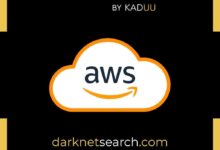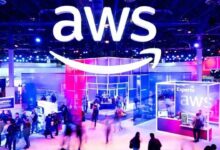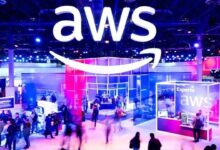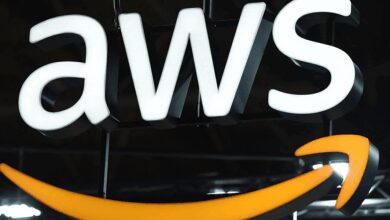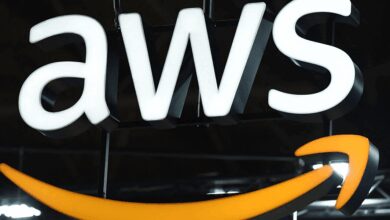AWS Free Tier: 12 Powerful Benefits You Can’t Miss in 2024
Thinking about diving into the cloud without breaking the bank? The AWS Free Tier is your golden ticket to exploring Amazon’s powerful cloud services—absolutely free. Whether you’re a student, startup founder, or seasoned developer, this guide breaks down everything you need to know to maximize your free access.
What Is AWS Free Tier and Why It Matters

The AWS Free Tier is Amazon Web Services’ way of welcoming new users to its cloud ecosystem. It allows individuals and businesses to use a wide range of AWS services at no cost for a limited time or up to certain usage thresholds. This initiative lowers the barrier to entry, enabling users to experiment, learn, and build without financial risk.
Understanding the Concept of Free Tier in Cloud Computing
Free tiers are common among cloud providers, but AWS was one of the pioneers in offering a comprehensive, long-term free usage plan. Unlike limited trial periods that end abruptly, AWS provides a mix of always-free services, short-term trials, and free usage within broader service limits.
- Always-Free: Certain services like AWS Lambda and DynamoDB offer limited usage forever.
- 12-Month Free: Many core services like EC2 and S3 are free for the first 12 months after account creation.
- Short-Term Trials: Some advanced services offer 6–12 months of free access with usage caps.
This hybrid model makes AWS Free Tier one of the most generous in the industry.
How AWS Free Tier Supports Innovation and Learning
For students, developers, and startups, the AWS Free Tier is more than just cost savings—it’s a launchpad for innovation. You can build full-stack applications, host websites, run databases, and even experiment with machine learning—all without spending a dime.
“The AWS Free Tier allowed me to build my first web app and deploy it globally. I learned more in three months than in a year of theory.” — Sarah Kim, Full-Stack Developer
By removing financial barriers, AWS empowers users to focus on learning, prototyping, and iterating quickly.
Types of AWS Free Tier Offers: Always Free vs. 12-Month Free
Not all free offerings on AWS are created equal. Understanding the two main categories—Always Free and 12-Month Free—is crucial to maximizing your benefits and avoiding unexpected charges.
Always-Free Services: Unlimited Access with Limits
These services remain free indefinitely, as long as your usage stays within specified limits. They’re perfect for small projects, personal websites, or backend support for lightweight apps.
- AWS Lambda: 1 million free requests per month.
- Amazon DynamoDB: 25 GB of storage and 25 units of read/write capacity.
- Amazon S3: 5 GB of standard storage, 20,000 GET and 2,000 PUT requests monthly.
- Amazon CloudWatch: Free monitoring and logging for basic metrics.
- AWS Identity and Access Management (IAM): Unlimited users and groups at no cost.
These services form the backbone of many serverless and microservice architectures.
12-Month Free Services: Full-Featured Trial for New Users
For the first year after signing up, AWS grants free access to many of its most popular compute, storage, and database services. This is ideal for building and testing full applications.
- Amazon EC2: 750 hours per month of t2.micro or t3.micro instances (Linux or Windows).
- Amazon RDS: 750 hours of db.t3.micro database instances (MySQL, PostgreSQL, etc.).
- Amazon S3: Expanded free tier during the first 12 months (same as always-free but with additional request allowances).
- Amazon Glacier: 10 GB of archive storage free each month.
- AWS Elastic Beanstalk: Free to use (you only pay for underlying resources, which may be covered by free tier).
These services let you run real-world applications, simulate production environments, and gain hands-on experience with enterprise-grade tools.
Top 5 AWS Free Tier Services You Should Use Right Now
While hundreds of services are available on AWS, some stand out for their utility, ease of use, and alignment with common development needs. Here are five must-try services under the AWS Free Tier.
1. Amazon EC2 (Elastic Compute Cloud)
EC2 is the cornerstone of AWS compute services. With the free tier, you get 750 hours per month of a t2.micro or t3.micro instance—enough to run a small web server continuously.
- Perfect for hosting websites, APIs, or development environments.
- Supports both Linux and Windows operating systems.
- Can be paired with Elastic IP and Security Groups for full control.
Just remember: the free tier covers only specific instance types and regions. Always check the official AWS Free Tier page for eligibility.
2. Amazon S3 (Simple Storage Service)
S3 is AWS’s object storage solution, widely used for storing images, backups, logs, and static websites. The free tier includes 5 GB of standard storage and a generous number of requests.
- Host static websites directly from an S3 bucket.
- Store user uploads, logs, or media files.
- Integrate with CloudFront for fast global delivery.
It’s one of the most reliable and scalable storage options available—even for free users.
3. AWS Lambda (Serverless Computing)
Lambda lets you run code without provisioning servers. You’re charged only when your code runs, and the first 1 million requests per month are free.
- Ideal for event-driven tasks like image resizing, form processing, or API backends.
- Integrates seamlessly with S3, API Gateway, and DynamoDB.
- No need to manage servers—perfect for beginners and experts alike.
With Lambda, you can build scalable applications without ever paying for idle compute time.
4. Amazon DynamoDB (NoSQL Database)
DynamoDB is a fully managed NoSQL database that scales automatically. The free tier includes 25 GB of storage and 25 read/write capacity units.
- Great for mobile apps, gaming backends, and real-time web apps.
- Low-latency performance with global tables for multi-region deployment.
- Supports JSON-like documents and key-value pairs.
It’s a powerful alternative to traditional databases, especially for serverless architectures.
5. Amazon RDS (Relational Database Service)
RDS simplifies setting up, operating, and scaling relational databases. The free tier includes 750 hours of db.t3.micro instances per month for 12 months.
- Supports MySQL, PostgreSQL, MariaDB, Oracle, and SQL Server (limited editions).
- Automated backups, patching, and monitoring included.
- Easy to connect with EC2, Lambda, or external applications.
This is a game-changer for developers who need a robust database without the hassle of manual setup.
How to Sign Up for AWS Free Tier (Step-by-Step Guide)
Getting started with the AWS Free Tier is straightforward, but it’s important to follow the right steps to ensure you qualify and avoid accidental charges.
Step 1: Create an AWS Account
Visit aws.amazon.com/free and click “Create a Free Account.” You’ll need:
- A valid email address.
- A phone number for verification.
- A credit card (required, even though you won’t be charged during the free tier).
AWS uses the card for identity verification and to upgrade your account if you exceed free limits.
Step 2: Verify Your Identity
After submitting your details, AWS will call you and ask you to enter a PIN using your phone keypad. This step confirms you’re a real person and helps prevent fraud.
Once verified, you’ll gain access to the AWS Management Console, where you can start launching services.
Step 3: Navigate the Free Tier Dashboard
After logging in, go to the Billing & Cost Management dashboard. Here, you can:
- See which services are eligible for the free tier.
- Track your usage against free limits.
- Set up billing alerts to avoid surprises.
This dashboard is your control center for managing costs and staying within free boundaries.
Common Mistakes to Avoid on AWS Free Tier
While the AWS Free Tier is generous, many users accidentally incur charges due to simple oversights. Here are the most common pitfalls and how to avoid them.
Mistake 1: Leaving Instances Running 24/7 Without Monitoring
Even though EC2 offers 750 free hours per month, if you run two t2.micro instances simultaneously, you’ll exceed the limit and get charged.
- Solution: Use AWS Budgets to set a $0 spending limit and receive alerts.
- Stop instances when not in use—don’t just let them run.
- Use Auto Scaling or Lambda to shut down resources during off-hours.
Mistake 2: Ignoring Regional Pricing Differences
Not all AWS regions have the same pricing. Some services may not be free in certain regions, even if they’re eligible elsewhere.
- Solution: Stick to US East (N. Virginia), US West (Oregon), or EU (Ireland) for maximum free tier coverage.
- Always check the AWS Pricing Calculator before launching resources.
Mistake 3: Forgetting to Delete Unused Resources
Many users create S3 buckets, EBS volumes, or RDS snapshots and forget about them. These can accumulate and lead to charges.
- Solution: Regularly audit your resources using the AWS Console or CLI.
- Enable lifecycle policies on S3 to auto-delete old objects.
- Delete EBS snapshots and AMIs you no longer need.
A clean environment is a cost-free environment.
Real-World Use Cases: What You Can Build with AWS Free Tier
The AWS Free Tier isn’t just for learning—it’s powerful enough to support real applications and businesses. Here are some practical examples of what you can build.
Personal Portfolio Website with S3 and CloudFront
You can host a fully static personal website using Amazon S3 and deliver it globally via Amazon CloudFront—all within the free tier.
- Upload HTML, CSS, and JavaScript files to an S3 bucket.
- Enable static website hosting on the bucket.
- Use CloudFront to cache content and reduce latency.
- Add a custom domain with Route 53 (limited free tier available).
This setup is fast, secure, and costs nothing if usage stays within limits.
Serverless API with Lambda and API Gateway
Build a RESTful API that processes requests without managing servers. This is perfect for mobile backends or microservices.
- Create functions in Lambda to handle HTTP requests.
- Use API Gateway to expose endpoints (1 million free calls per month).
- Store data in DynamoDB (always free up to 25 GB).
- Add authentication with Cognito (50k monthly active users free).
This architecture scales automatically and costs nothing for low-traffic apps.
Development and Testing Environment on EC2
Use EC2 to create a Linux or Windows VM for coding, testing, or CI/CD pipelines.
- Install Node.js, Python, or Docker on a t3.micro instance.
- Run a local database with MySQL or PostgreSQL.
- Use GitHub Actions or CodeBuild (limited free tier) to automate deployments.
- Shut down the instance when not in use to stay within free hours.
It’s like having a remote computer you can access from anywhere—free for a year.
Maximizing Your AWS Free Tier: Pro Tips and Best Practices
To get the most out of the AWS Free Tier, you need more than just access—you need strategy. These expert tips will help you stretch your free usage further.
Tip 1: Use AWS Budgets and Cost Alerts
Set up a budget with a threshold of $0.01 to get notified the moment AWS detects potential charges.
- Go to the Billing Dashboard > Budgets > Create Budget.
- Choose “Cost Budget” and set the amount to $0.01.
- Enter your email for alerts.
This simple step can save you hundreds in accidental fees.
Tip 2: Leverage AWS Educate and Nonprofit Programs
If you’re a student or part of a nonprofit, you may qualify for additional credits and extended free access.
- AWS Educate offers free credits and training for students and educators.
- AWS Nonprofits provides grants, technical support, and up to $5,000 in annual credits.
These programs can extend your free access well beyond the standard tier.
Tip 3: Automate Resource Cleanup with Lambda
Create a scheduled Lambda function that checks for and deletes unused resources.
- Scan for unattached EBS volumes.
- Delete old S3 buckets or empty ones.
- Terminate idle EC2 instances.
This automation ensures you never pay for forgotten resources.
Frequently Asked Questions About AWS Free Tier
Is AWS Free Tier really free?
Yes, the AWS Free Tier is genuinely free for eligible services and usage limits. You won’t be charged as long as you stay within the defined boundaries. However, if you exceed usage limits or use services outside the free tier, standard rates apply.
Do I need a credit card to sign up for AWS Free Tier?
Yes, AWS requires a valid credit card to verify your identity, even for the free tier. This helps prevent abuse of the system. You won’t be charged unless you exceed free usage limits or continue using paid services after the free period ends.
What happens after 12 months of AWS Free Tier?
After 12 months, the 12-month free services (like EC2 and RDS) will start accruing charges based on standard pricing. However, always-free services (like Lambda and DynamoDB) will continue to be available as long as you stay within their usage limits.
Can I use AWS Free Tier for a production website?
Yes, many small websites and startups run entirely on the AWS Free Tier, especially if they use serverless architectures. As long as your traffic and resource usage stay within free limits, you can operate a production site at zero cost.
How do I monitor my AWS Free Tier usage?
You can monitor your usage through the AWS Billing & Cost Management Dashboard. It shows your current consumption of free tier benefits and alerts you when you’re approaching limits. You can also set up custom billing alerts for specific services.
From launching your first website to building scalable serverless apps, the AWS Free Tier opens doors that were once reserved for well-funded companies. By understanding its structure, avoiding common mistakes, and using smart strategies, you can harness the full power of the cloud—without spending a dime. Whether you’re learning, building, or launching a startup, AWS gives you the tools to succeed. Start today, build tomorrow.
Further Reading:

